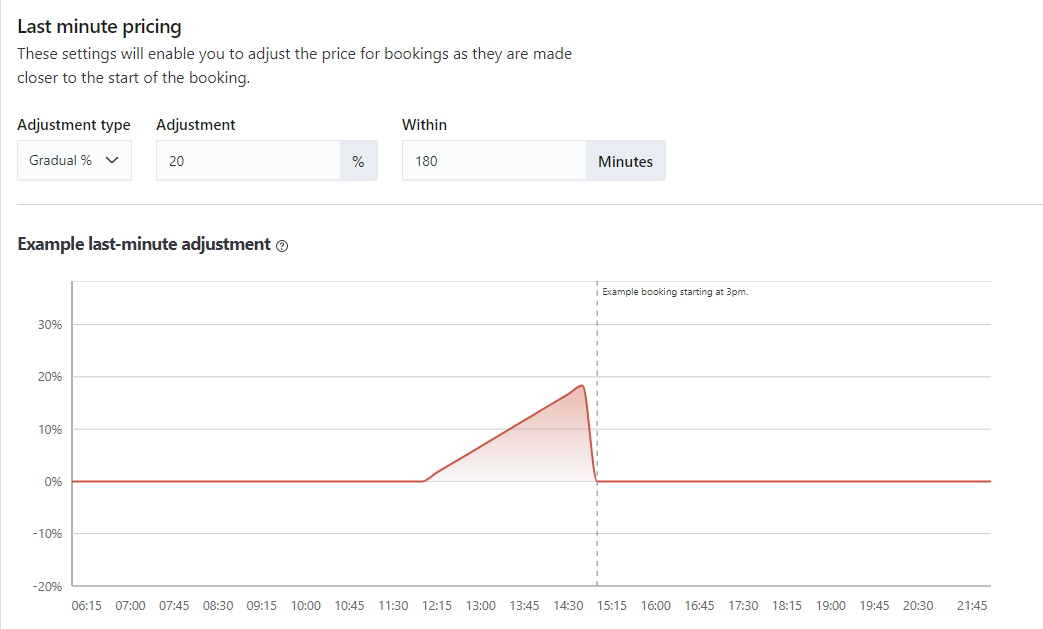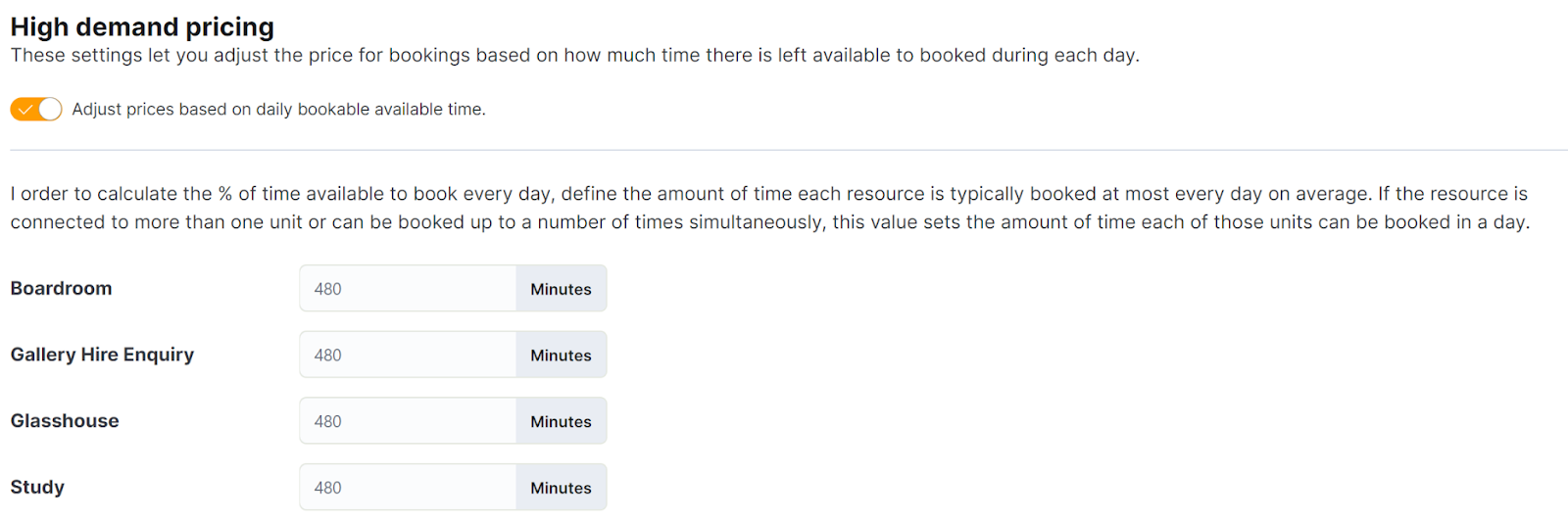Dynamic pricing - the ninth wonder of the world
Albert Einstein is widely credited with coining the phrase: “Compound interest is the eighth wonder of the world. He who understands it, earns it … he who doesn’t … pays it.”
The jury is still out about whether he actually said this or not, but that doesn’t make the statement any less true. Warren Buffet prefers to call this financial phenomenon The Snowball and has built an empire around its principles.
Today, we’ll be discussing a financial phenomenon of our own, called Dynamic Pricing. We’d like to think of it as the ninth wonder of the world.
For the hospitality industry in particular, dynamic pricing strategies offer the best means to automate revenue management. Let’s explore how easy it can be to set up dynamic pricing in your management software and the potential advantages it affords.
The sweet science.
The hospitality industry is no stranger to using trend-driven pricing strategies. However, we believe that there’s a delicate balance between adjusting prices to maximise revenue and creating uncertainty amongst potential customers.
Let’s take hotels as an example. Using real-time market trends, hotels can maximise a room’s potential value by raising prices during periods of high demand. During off-peak periods, this same room would be sold at below its value to limit vacancies. On paper, this makes sense, but we’ve all been there: the frustration of a room’s pricing being inordinately high just a few minutes after you last checked. Here’s where the balance comes in.
Imagine being able to plug into multiple data points all at once, then let a sophisticated analytics tool adjust the pricing for you. For a hotel, these data points could include historical occupancy, current market fluctuations, peaks in season, guest patterns, room types, trends and local events (such as concerts). By digesting each of these data points, the right system could adjust pricing on the fly and ensure room revenues were fairly maximised, ADRs maintained, without price gouging potential customers or negatively impacting the brand.
How we approach dynamic pricing at Nexudus.
Demand prediction
One of AI’s strongest suits is looking for patterns, crunching numbers and building a cohesive understanding of the future. Our native AI tools, built into the dashboard, allow users to predict how busy a particular resource will be at any given time.
A sophisticated AI model crunches the numbers of bookings made in the last year, extracts fresh data from the last four weeks and takes into account each room’s differing properties, the locations they’re in, as well as how holidays impact usage.
The result is an ideal balance between fair pricing and revenue maximisation.
Demand prediction in action
Last minute requests
We’re big proponents of using trends to define pricing. On the Nexudus platform, users can automatically adjust booking rates based on forecasts automatically gathered from usage. These can further be supplemented with custom data points to provide a more comprehensive picture of pricing possibilities. Here’s a preview of how we allow users to define custom percentages during periods of high demand, average demand and low demand.
Gradual dynamic pricing on the Nexudus platform
For example, you can increase booking rates by up to a third (33%), when customers book resources last minute - this percentage could increase based on the number of hours notice provided before booking. In cases of extra high demand, those looking to book one hour before could see a rate increase of 25%, with those looking to book 10 minutes before receiving the full 33% increment.
Capacity-based pricing
Only a few rooms remaining? Only a few minutes left to book a room? Now we’re talking.
Users can jump into the Nexudus platform and define their own parameters for ‘full capacity’ for any given space. When a popular area, room or resource runs low on the bookable time you’ve assigned it per day, it will kick into dynamic pricing mode without you having to lift a finger.
Sure, we assign you a suitable limit to begin with, but where’s the joy without a healthy level of customisation built in? Users can set values to each stage of capacity for the room - eg, a different price at 50%, a new one at 25% and another at 10% to make the best possible use of capacity limitations.
Users can set their own preferred limits for capacity-based pricing
The ninth wonder, without the worry.
We believe that any dynamic pricing strategy has to be informed by more than just an opportunity to increase revenue. We understand that this is not always possible, especially if a hospitality organisation faces the technological barriers of integrating multiple systems together in order to maintain a healthy pricing balance.
Using an analytics-driven system like Nexudus ensures that all the data points for your space live alongside your operations dashboard, so your pricing is always informed by real-time data from your workspace trends. Book a demo with us today to learn more.
Related stories
Sustainable Wokplace Design: 5 Best Practices for 2025
The topic of sustainability continues to dominate conversations in the flexible workspace industry.
Evolving Needs of Flex Space Occupiers
Flex space industry growth has undeniably been accelerated by a major shift towards more flexible work models. Last year, 45% of office workers were hybrid, splitting their time between home, the office, and third places, reports Ipsos Karian & Box. Times are changing, bringing new expectations around the purpose of the office. At GCUC UK London, the panel discussion: “Evolving Occupier Needs in the Flex Space Market,” offered valuable insights into the transforming expectations of flex space occupiers. This article shares some of their conversations while exploring this topic further.
Wellness Tourism: How the Hospitality Industry Is Catering to Health-Conscious Travellers
Discover how wellness tourism is reshaping the hospitality industry, catering to health-conscious travelers with unique cultural experiences, tailored wellness offerings, and advanced wellness technology. Learn how hotels, coworking, and coliving spaces are meeting the growing demand for well-being and work-life balance on the go.
Designing Wellness Spaces: How to Create a Haven in Hospitality Spaces
Explore how the wellness industry is shaping hospitality spaces. Learn about wellness amenities, sensory design, biophilic trends, and creating inclusive environments in hotels, coworking spaces, and more
Balancing Act: The Intersection of Tech and Wellness in Mixed-Use Developments
Discover how the intersection of technology and wellness in mixed-use developments enhances productivity, happiness, and well-being. Explore trends, smart building solutions, and innovative wellness amenities shaping the future of urban living.
Elevating mixed-use spaces: The crucial role of hospitality and technology in community management
As mixed-use developments continue to grow in popularity, merging visitors with locals through a high level of hospitality, and community, in whatever way the space functions, is of prime importance.




